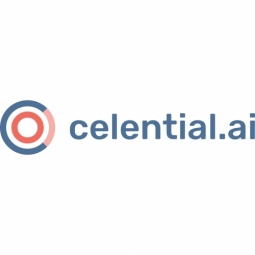Case Studies.
Add Case Study
Our Case Study database tracks 22,657 case studies in the global enterprise technology ecosystem.
Filters allow you to explore case studies quickly and efficiently.
Download Excel
Filters
-
(3)
- (3)
-
(2)
- (2)
-
(2)
- (2)
-
(2)
- (2)
-
(1)
- (1)
- View all 5 Technologies
- (4)
- (2)
- (1)
- (1)
- (3)
- (2)
- (2)
- (1)
- (1)
- (1)
- (1)
- View all 6 Use Cases
- (2)
- (1)
- (5)
Selected Filters

|
Heartbeat Health's Accelerated Talent Acquisition with Celential's AI
Heartbeat Health, a fast-growing HealthTech company, was facing a talent shortage as it sought to accelerate its product research and development. The company's product and engineering teams work closely with medical board-certified cardiologists, making candidates with healthcare domain-focused skills a necessity. However, their Talent Acquisition team lacked the internal capacity to source enough qualified candidates. The company initially turned to recruiting agencies for support, but the candidates presented to them rarely had the qualifications necessary to succeed at Heartbeat. The challenge was to find a solution that could provide a strong candidate pipeline with skill, product domain, and team match, while also reducing the time and cost to hire.
|
|
|

|
Affinity and Celential: Building a Strong, Diverse Talent Pipeline for High-Volume Hiring
Affinity, a relationship intelligence platform, was facing a significant challenge in 2020. The company was looking to scale their technical team across the US and Canada after opening a new office in Toronto and experiencing three years of record growth. The demand for their data-driven CRM platform was expanding rapidly, and they needed skilled talent to further accelerate their technology innovation. Additionally, Affinity was committed to building an inclusive workforce, a task that was proving to be slow and difficult. Despite having a company culture focused on empowering employees and having won multiple “Best Workplace” awards, building a strong and diverse talent pipeline for its many open technical roles was a significant hurdle.
|
|
|

|
AI-Driven Recruitment: OneSignal's Success with Celential.ai
OneSignal, a customer messaging and engagement platform, was facing a significant challenge in filling critical engineering roles. Despite being a market-leading service, the company struggled to develop an extensive talent pipeline of engaged and high-quality candidates. OneSignal's hiring approach focuses more on candidates' capabilities rather than their educational backgrounds, and they value the unique perspectives brought by diverse experiences. However, using popular professional networks and recruiting channels, they found it difficult to find suitable candidates that met their specific requirements.
|
|
|

|
Automating Recruitment in FinTech: A Case Study on Celential and Paradigm
Paradigm, a New York-based FinTech company, was facing a significant challenge in recruiting quality engineers for its operations. Despite its rapid growth and success in automating over-the-counter cryptocurrency trades for institutional traders, the company was unable to attract the right talent. The company's lack of a West Coast presence, an executive team fully occupied with running the business, and the absence of an in-house recruiter were significant obstacles. The situation was further complicated by the ongoing global pandemic, which made traditional recruitment methods less effective and more challenging.
|
|
|

|
AI-Driven Recruitment Boosts Monograph's Talent Pipeline
Monograph, a San Francisco-based productivity software company, was facing a significant challenge in expanding its team. Despite having a large pool of potential employees, the company was struggling to find candidates that fit their unique culture. The company, which creates intuitive tools to automate practice operations for architecture, landscape, and design firms, was particularly interested in finding highly skilled and diverse engineering talent. The challenge was further exacerbated by the ongoing pandemic, which made it difficult for Monograph to independently increase the volume of appropriate candidates.
|
|




